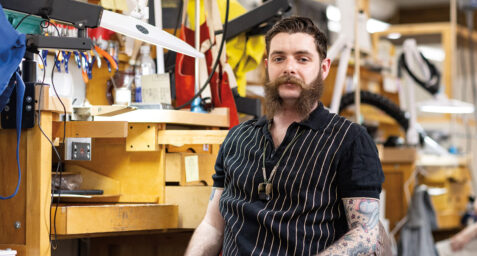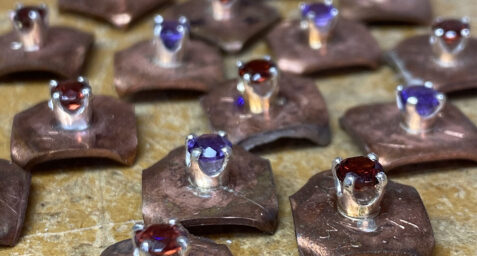Making Fine (Not Fast) Jewelry
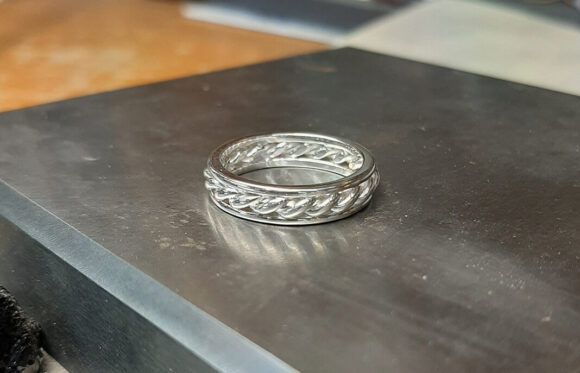
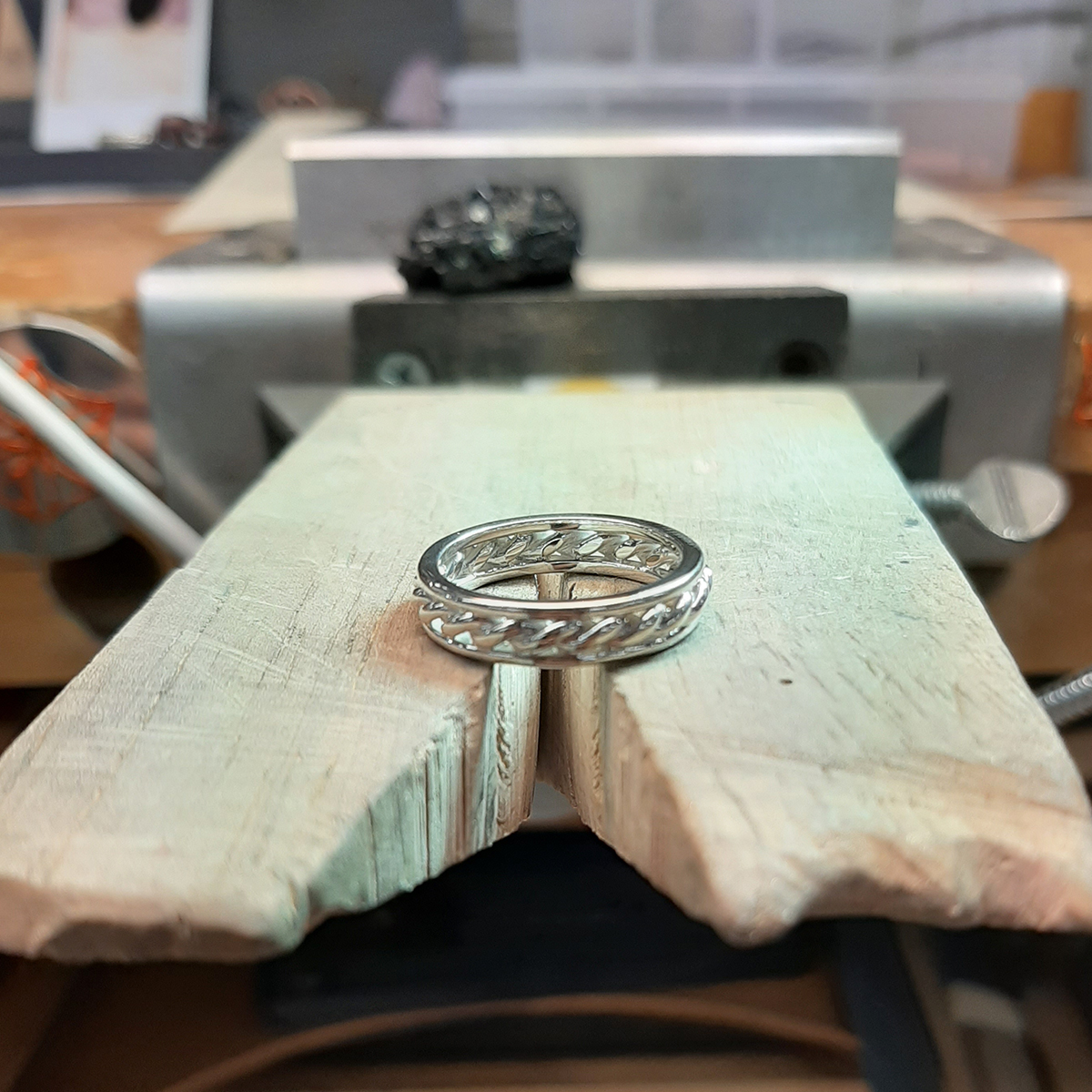
From the start of my application process at North Bennet Street School, I was told that being a veteran would help me greatly in the Jewelry Making & Repair (JM) program.
I had just left an apprenticeship with a large corporation in the jewelry industry and was excited to get an education that would allow me to focus my career in a new direction, which was not the way my corporate job was taking me. At my corporate apprenticeship, speed was valued greatly as it helped the company keep up with production. I figured the benefit I had being a veteran in my program would have been my ability to work quickly, because speed and intensity had been drilled into my brain for years, and it was one of my most valued traits during my apprenticeship. Until I started my education at NBSS, working quickly was all I ever knew.
My first few days at NBSS felt like a dramatic slam on the brakes, but nonetheless, a parallel to my time in the Marine Corps. After leaving the Marine Corps, I thought I would never see standards on a scale to which a single strand of hair out of my bun would cost me inspection. At NBSS I am held to a slightly lower standard: two strands of hair. (The average strand of hair is .025mm and the JM program has a .05mm tolerance for lost material.) A single tool mark or slip of a file could cost me the material that determined my grade.
These details became very important for me to accommodate. I learned that slowing down was the only way I could really pay attention to the work my hands were doing.
This change of pace did not come easily to me. At the end of my first semester, I started my twisted wire band ring, consisting of twisted wire soldered in between two washer-like bands. The project is set in the curriculum to take 5 to 9 working days, and I began the project in May about a week before summer vacation. I had my two washer bands made and my twist ring made. I patiently waited all summer for what I thought would be my final instructions: to solder the three bands together and finish the piece.
Though I notice the urge to rush through what seems to be a heavier workload, I remind myself: Fine jewelry is not fast jewelry. The challenge is to be more meticulous than time-bound.
When I returned to school in the fall I faced the harsh reality that the program’s .05mm tolerance turned to be more than just an academic standard—it was critical to the function of my work piece. There was no way for my twist band to sit completely flat and flush to the washer bands when the band was not a consistent measurement all the way around.
The Department Head, Ann Cahoon JM ’02, told me to make my twist band over again since the original one would not function in my workpiece. I felt frustrated, but determined to improve.
In my head, the clock was ticking. I tried kicking my speed back into full gear to make up for time lost due to my mistakes, but again, that doesn’t always work in my favor. To speed up my soldering process of the twist, I used a hot flame that I thought I had control over.
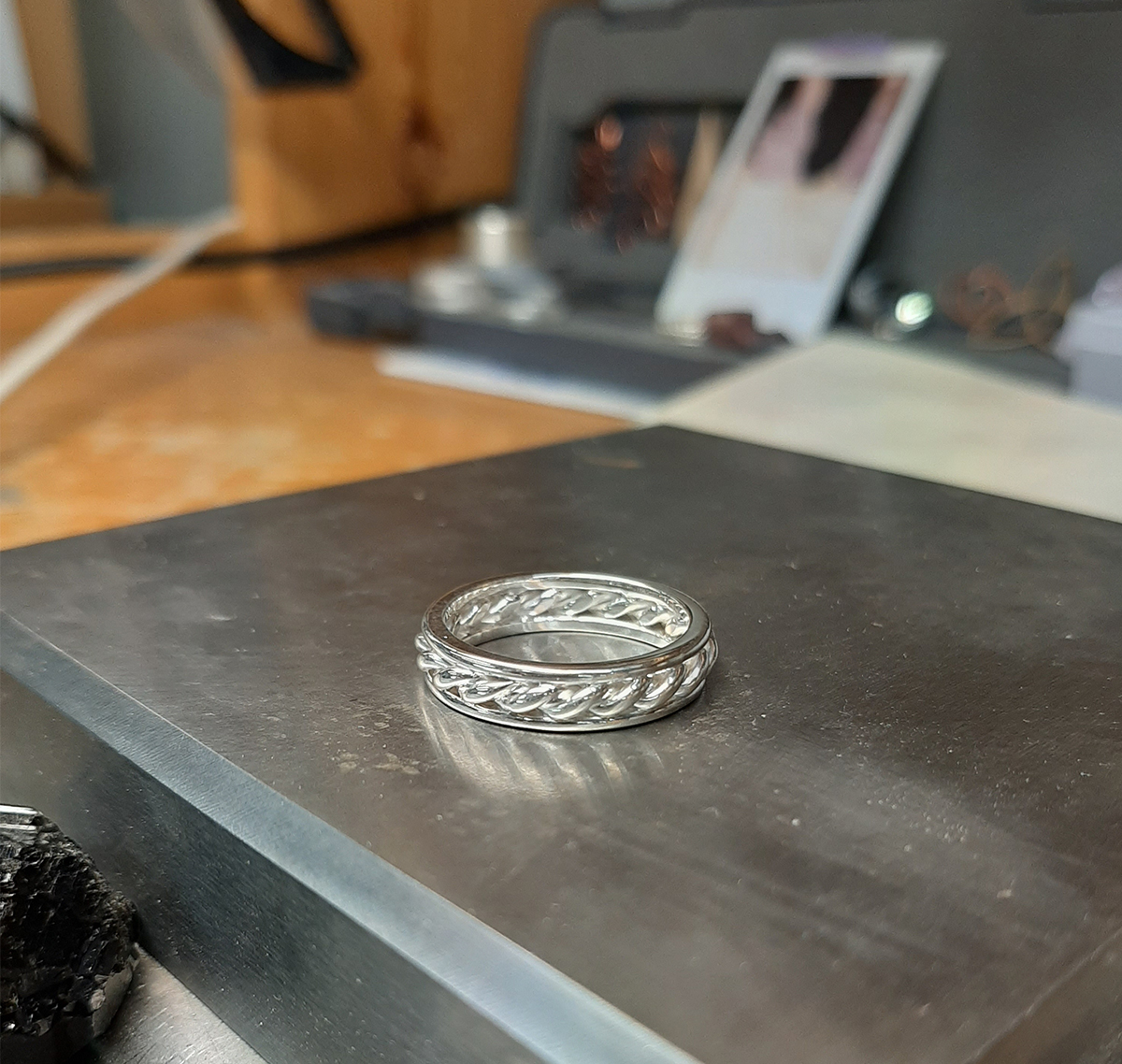
I was relieved when I finished and turned in this project, but that relief was ripped away from me when I got my grade back. Ann told me to look at my seams. A vast majority of them were cracked! I had ignored so many important details to the function of my piece while working quickly in an effort to make up time lost. Our standard at NBSS is to fabricate a piece of fine jewelry that will last for years and survive any repairs it may need along the way. A cracked solder seam will crack more when put under heat needed in sizing or making a repair. It was my consistent overheating of my piece, using a flame I thought I had control over, that caused this failure in sustainable function.
My attention to detail was compromised because of my need for speed.
Since then, I have started this project over with a new approach with detail and function as my priority. All of us in the JM program have one of these “skill builders” to attend in our downtime, even as we carry on with what is next in the curriculum. Ann has even encouraged me to challenge myself by adding a twist wire ornament to my next project, mimicking what had stifled me in my twist wire ring.
Though I notice the urge to rush through what seems to be a heavier workload, I remind myself: Fine jewelry is not fast jewelry. The challenge is to be more meticulous than time-bound. I’m now able to utilize my experience with fine detail, to create pieces that can be multi-generational.
The jewelry we make is intended to last generations, and sometimes it may feel like it’s taken generations to make. But the skills I learned are forever, and I’m excited to use them in my career as a jewelry maker.
